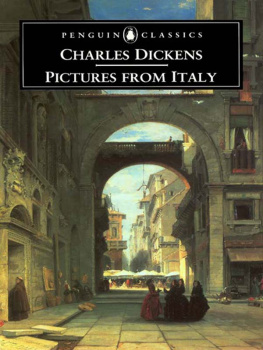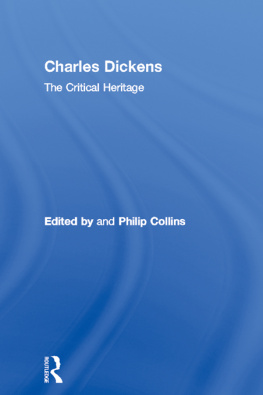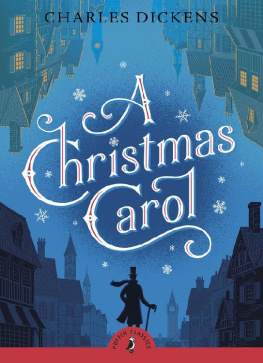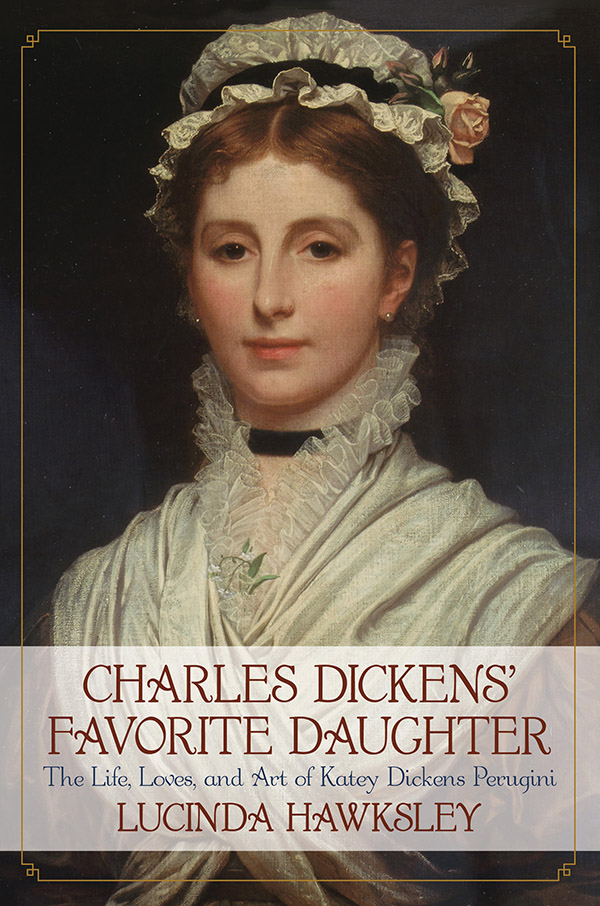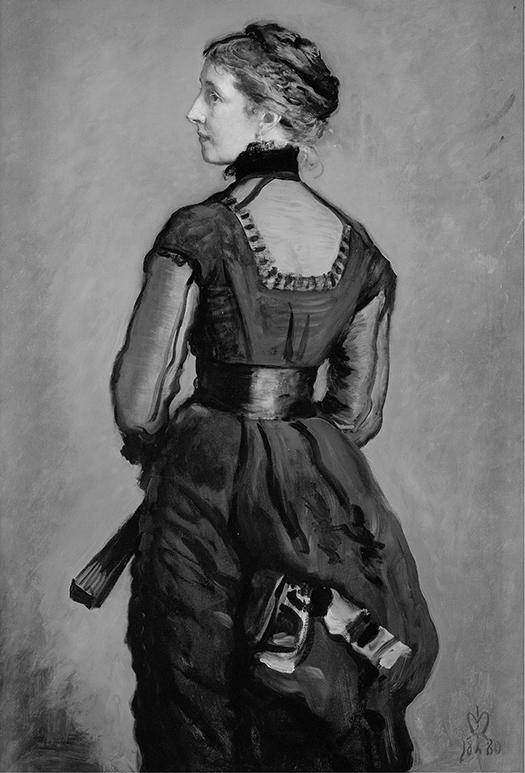CHARLES DICKENS FAVORITE DAUGHTER
B Y THE SAME AUTHOR:
Charles Dickens
Lizzie Siddal: The Tragedy of a Pre-Raphaelite Supermodel
50 British Artists You Should Know
When Art Really Works (co-authored with Andy Pankhurst)
Essential Pre-Raphaelites
March, Women, March: Voices of the Womens Movement 17921928
CHARLES DICKENS FAVORITE DAUGHTER
The Life, Loves, and Art of Katey Dickens Perugini
LUCINDA HAWKSLEY
LYONS PRESS
Guilford, Connecticut
An imprint of Globe Pequot Press
Copyright 2013 by Lucinda Hawksley
ALL RIGHTS RESERVED. No part of this book may be reproduced or transmitted in any form by any means, electronic or mechanical, including photocopying and recording, or by any information storage and retrieval system, except as may be expressly permitted in writing from the publisher. Requests for permission should be addressed to Globe Pequot Press, Attn: Rights and Permissions Department, PO Box 480, Guilford, CT 06437.
Lyons Press is an imprint of Globe Pequot Press.
Project editors: Ellen Urban and Lauren Brancato
Layout: Maggie Peterson
Library of Congress Cataloging-in-Publication Data is available on file.
All photos supplied courtesy of the author unless otherwise noted.
E-ISBN 978-0-7627-8521-6
This book is dedicated to the memory of Andrew Xavier (19682011), a true friend without whom the world is a less happy and less witty place.
CONTENTS
FAMILY TREE
A NOTE ON NAMES
Charles Dickens wife, Catherine, is often referred to in his letters as Kate; however, in order that readers should not confuse her with her daughter, I have referred to her as Catherine throughout.
Kate Perugini was christened Catherine Elizabeth Macready Dickens, known throughout her childhood as Katey or Katie, and changed her name in adult life to Kate. Her siblings and many of her friends also knew her as Kitty or Kittie. I have referred to her as a child as Katey, which appears to have been Dickens preferred spelling of her name. As an adult I have referred to her as Kate, as she preferred.
Confusingly, Kateys father, her eldest brother, and both her husbands were called Charles. To minimize the confusion, I have used the name Charley for her brother, as he was known by his family. Her first husband, Charles Allston Collins, was often called Charlie by his friends, so I have used this. The name of Kateys second husband is often anglicized to Charles Edward Perugini; I have, however, referred to him by his Italian name of Carlo, which is the name Kate called him.
Kateys sister Mary was almost always known as Mamey or Mamie. The former spelling is the one her father favored when she was a child, but the latter is how the family and her friends referred to her as an adult and the name written on her grave, so I have gone with that spelling. In occasional, formal, circumstances she is referred to by Dickens as Mary.
William Thackerays daughters were known as Anny, also spelled Any and Annie, and Minny, also spelled Minnie (although her real name was Harriet). I have referred to them as Anny and Minny, which seem to be the preferred spellings.
FOREWORD
One of my most vivid memories from childhood is of a painting my parents owned. I loved it and would stare at it wondering who the beautiful woman was, dressed all in black standing with her back to the viewer, her head turned just enough to enable you to see her face, but not quite enough to prevent her from being mysterious. Two aspects particularly fascinated me: the bustle of her dress with its thick satin bow perched on the top and the way her hair was arranged, which I would try to emulate (without success).
I remember asking my father who the person in the painting was. He told me she was Kate, Charles Dickens daughter, and my great-great-great aunt. The painter, he said, was John Millais, a very famous artist. At the age of eight, I was not particularly interested in Millais, but the desire to find out more about Kate, or Katey as I came to know her, intensified. Later, while I was studying for a post-graduate degree in the history of art, her namein its several incarnationskept appearing: Katey Dickens, Kate Collins, Kate Perugini. Usually mentioned as an adjunct of her famous father, she was however also given separate status as an artist, as a model, as one of Lord Leightons circle, and as the wife of two artists.
I became obsessed with finding out more about this talented relative and about her long and interesting life. The more I researched, the more fascinating she became. Here was a woman who achieved considerable fame in her lifetime: an intimate friend of such people as Lord Leighton, William Thackeray, and George Bernard Shaw; a prolific artist who exhibited regularly at the Royal Academy and at the Society of Lady Artists and whose works sold consistently welland yet no one, save the most ardent art lovers or Dickensians, recognizes her name.
In 1939 a writer named Gladys Storey published a book entitled Dickens and Daughter . It was based on the friendship Gladys and her mother had built up with Katey in the last decade of her life. It is not so much a biography as a collection of anecdotes around a loose biographical structure. It is a fascinating historic document, but often inaccurate andnecessarilybiased by Gladys and Kateys close relationship. Charles Dickens Favorite Daughter aims to redress the balance and to bring Katey into what should be her recognized place in the history of British art.
Sadly, Portrait of Mrs. Perugini (1880) no longer belongs to the family. It is, however, in the possession of a private collector.
Portrait of Mrs. Perugini (1880) by Sir John Everett Millais
COURTESY THE BRIDGEMAN ART LIBRARY
PROLOGUE
In the early nineteenth century, the most prestigious art school in Britain was Londons Royal Academy and its preparatory school, known as Sasss. In 1838, Sasss accepted its youngest-ever artist, a nine-year-old boy from Jersey who was already being hailed as a genius. While still in his twenties this artist would find his works derided by the novelist Charles Dickens and by the countrys most influential art critic, John Ruskin (whose ex-wife the young artist had recently married). Yet he would rise above the controversy to become the highest-paid artist in Britain, be created a baronet by Queen Victoria, and become President of the Royal Academy. His name was John Everett Millais.
Millais first grew to prominence over a scandala scandal associated with the artistic movement of which he was a founding member: Pre-Raphaelitism. He was one of seven young artists, all of whom were Royal Academy trained, who formed a group called the Pre-Raphaelite Brotherhood (known as the PRB). They disagreed with many of the principles of art as defined by the rigid government of the Royal Academy and wanted to paint in the style that had been popular in Italy before the advent of Raphael. When the authorities and the public discoveredby an unfortunate chancewhat the letters PRB stood for, they were furious at the groups perceived arrogance and actively turned against them, their followers, and anyone who assumed a Pre-Raphaelite style of painting. It was several years before artists who painted in this style were accepted back into mainstream galleries. Millais was one of the fortunate few who was not ruined by the furor, largely because he was kept financially secure by family money.





